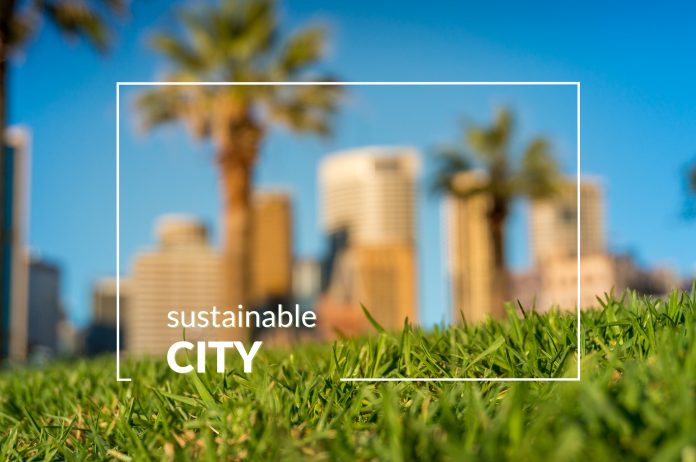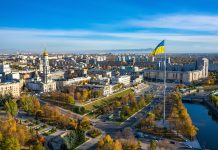Nadeem Malik, Country Manager for UK & Ireland at Software AG, presents digital transformation as part of the solution for urban environments to meet sustainability goals and net-zero challenges
This year Carbis Bay, a British coastal resort, hosted the 47th G7 Summit. With the environment at the centre of discussions, it was fitting that the region was chosen for the international meeting, Cornwall is at the forefront of the UK’s own plans for sustainability; Prime Minister Boris Johnson announced that it would be the nation’s first net-zero area. Plans include investment in town centres and businesses and funding for landscape regeneration.
It must be said, however, that Cornwall is a predominantly rural area, known for its farming and fishing. It is a far cry from densely populated urban centres like London. This begs the question: what would it take to make a major international city into a net-zero success story? The answer is of course a radical shift to renewable energy sources, but a different kind of change is necessary too – digital transformation.
Government bodies, urban planners, and business leaders face tough challenges in their drive to meet sustainability goals in urban environments. According to UN Habitat, cities produce between 71% and 76% of CO2 emissions from energy use globally, placing them at the heart of our struggle to prevent catastrophic climate change. The case for transforming the way we build and operate cities could not be more pressing.
Smart solutions to net-zero
So how can digital transformation help make our cities more sustainable? A key area that can be improved by new technologies is energy efficiency. Internet of things (IoT) and analytics solutions make it possible to create truly connected smart cities that use energy in a more intelligent way; connected devices can provide useful data and insights to inform a range of sustainability initiatives.
One way that IoT can help improve energy efficiency is smart lighting. Rather than our street lights simply being programmed to turn on and off at certain times of day, IoT sensors can be used to create more intelligent lighting solutions – for example, changing light levels based on how many people are on a street. If no one needs the light, then why waste precious electricity?
A similar approach can be taken to waste management: equipped with sensors, smart bins can measure how full they are, and waste removal can take place according to need, rather than an arbitrary schedule. This saves resources and energy, and overtime data analytics can be used to further refine a city’s approach to waste or introduce new recycling initiatives.
IoT solutions also have major implications for sustainable infrastructure projects. Public transit can be transformed by using IoT technology to create smart buses and trains. IoT sensors can monitor the particulates and nitrous oxide in vehicle exhausts and inform solutions through intelligent process management, as seen in the case of London’s iconic red buses. When deployed at scale, approaches that encourage more people to use public transit can dramatically reduce the use of individual vehicles, which use more electricity overall – or worse, fossil fuels.
What does sustainable success look like?
There are already a number of smart city success stories that we can look to as examples of projects targeting net zero. Singapore is targeting major cuts to emissions with Tengah, a new smart energy town. It plans to build 42,000 homes across five districts and is employing clean energy tech, as well as an app that allows residents to monitor their energy and water usage. By empowering residents to take control of their energy use with technology, they hope to change behaviours for the better.
Likewise, the Abu Dhabi City Municipality’s Zayed Smart City project is aiming to transform the environmental, social, and financial aspects of urban life. The city uses the Cumulocity IoT platform to connect various technological solutions, spanning everything from air quality measurement and water metering to smart parking, waste management, and Low Power WAN (LPWAN) technologies.
A connected approach, as seen in Abu Dhabi, solves one of the primary challenges we face in creating effective smart cities – the need for end-to-end device management to keep assets and infrastructure up to date. IoT sensors are powerful tools, but are less effective when used in isolation; you need technologies that can collect and use the data they collect for meaningful analytics. By making cities that are truly connected, we can make better, more sustainable decisions.
Net-zero cities are within reach
As more and more sustainability pledges are made, we need to be sure that we look beyond nice-sounding announcements and have meaningful conversations about the nature and scope of the changes required to meet climate targets. The year 2050 is increasingly becoming a focal point of sustainability initiatives, with institutions ranging from Shell to the UK government setting their sights on the year as a net-zero milestone. However, the latest projections from McKinsey only see a 25% decline in greenhouse gas emissions by 2050, which would put us on track for a devastating 3.5°C rise in temperatures.
We urgently need to change the way we live and work and transforming our cities to be smarter and more sustainable will play a major role in this – from cutting down on electricity wasted on lighting, to empowering urbanites to get to grips with their domestic energy use. The UK’s target of making Cornwall its first net-zero region is a good place to start on our journey to global net-zero, but it’s just that – a start.











